Slavic wedding rings

The wedding ceremony is the oldest and is a part of the culture of all the peoples of the world. One of the most beautiful and serious wedding ceremonies is Slavic. It observes all the traditions that permeate both the celebration itself and the attributes. Slavic wedding rings are not only symbolic, but also protect a young family.
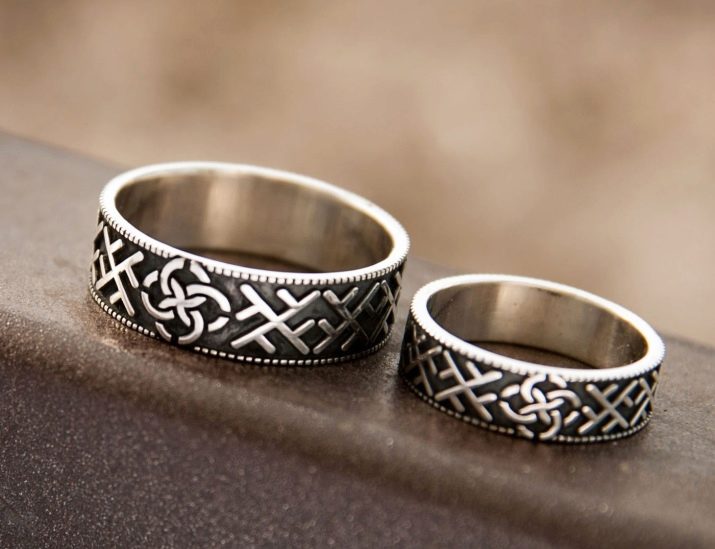
Wedding amulets of the ancient Slavs
B. A. Rybakov distinguishes several types of family Slavic amulets:
- The bird that meekly sits in the nest represents family life.
- Images of spoons, as a symbol of satiety, or to be more precise, a symbol of material condition.
- Key. It was believed that he was guarding the property.
- The jaw of a predator is a talisman against evil and dark forces. It is considered the most ancient amulet of the Slavs.



But the wedding book, popular nowadays, is absent from Rybakov's study from two volumes. Does this symbol mean only a myth and a beautiful story invented in modern society?
As you know, the purpose of a wedding is to protect family and love. But it is also known that in ancient times marriages were concluded for the most part by calculation and there was never any talk of love.


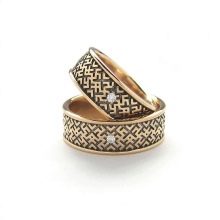

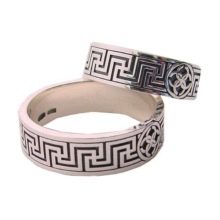
It is also believed that, in addition to newlyweds, it was customary to give wedding rings to people raising children alone. On the one hand, the ancients believed that such a gift in the form of a ring was supposed to preserve the energy of the family. But on the other hand, the ring made an alliance with loneliness.

Motives and materials
The most popular motive for wedding rings of the Slavs was the swastika. It had about 50 meanings and interpretations, the main of which was the symbol of eternal life and the cycle of life. The symbol resembled the sun and personified the victory of good over evil.
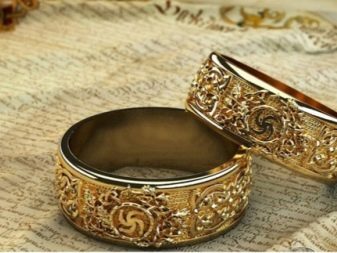
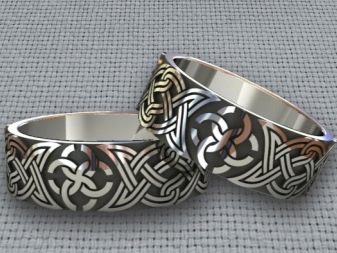
The outlines of the swastika on paired jewelry meant endless loyalty and love, as well as overcoming all difficulties and joint rebirth after death.



The most popular amulet and symbol were considered wedding decorations. The symbol represents two swastikas - red and blue, personifying the masculine and feminine principles, as well as the interweaving of two genera. The symbols are not closed in a circle, which means that the family lives not only in its own world, but also in the tribe. The wedding bridal has no sharp corners, which speaks of smoothness and peace.


Eight rays personify eight children, whom the spouses gave to parents and gods as payment. Four were given by the mother, four by the father. And the ninth child - the firstborn, was given by both parents to his family.

The Solard sign adorned the wedding rings. It is also made in the form of a swastika and means fertility and femininity.
Another symbol for wedding rings is the Odal rune. It symbolizes the continuation of the family, homeland and property, but the main meaning is the safety of material values in the family.
For women, wedding products were decorated with the symbols of Mokos - Mother Earth. They were depicted on the rings as a square divided into four parts.



For the manufacture of Slavic wedding rings, he used mainly bronze, copper and gold. Silver was considered a rare and expensive metal, and the owners of such jewelry could only be envied.
But, despite the availability of silver these days, it is still not recommended to use it for making wedding jewelry, as it is short-lived and loses its shape over time.
The most popular rings in the Slavic style are white gold jewelry. They are similar to silver but are durable.
Cast jewelry with an engraved pattern is not inferior to them in popularity.



How to wear?
In Russia, the rules for wearing wedding rings have always been observed. After passing the engagement ceremony and being criticized by the groom and the bride, young people exchanged amulet rings and put them on each other on the ring fingers of their right hand.
Immediately after the wedding itself, other rings were put on the same finger of only the left hand.



With the advent of Orthodoxy, part of the tradition has sunk into oblivion, and now the newlyweds are limited only to wedding rings, which they put on each other after the wedding on their right hand.
The wedding rings of the Slavs differed from the engagement rings in that the first had to be exactly the same, and the second could differ, depending on the amulet applied to them.

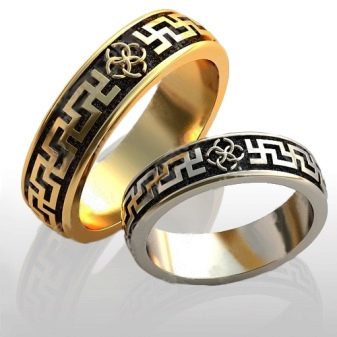


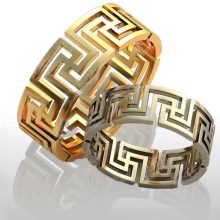
Today wedding traditions are such that wedding rings can be very diverse. The choice depends only on the personal wishes of the young.










